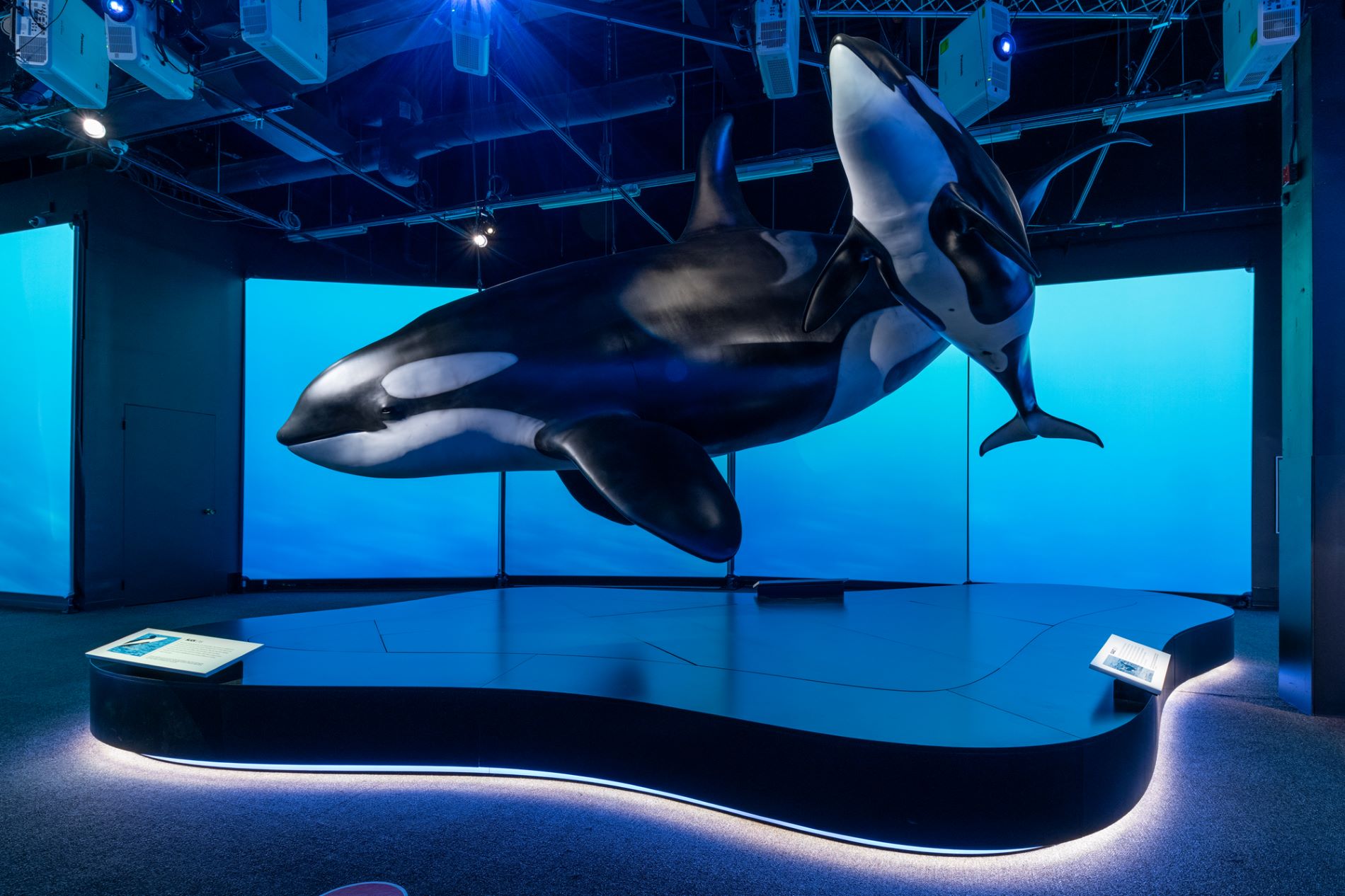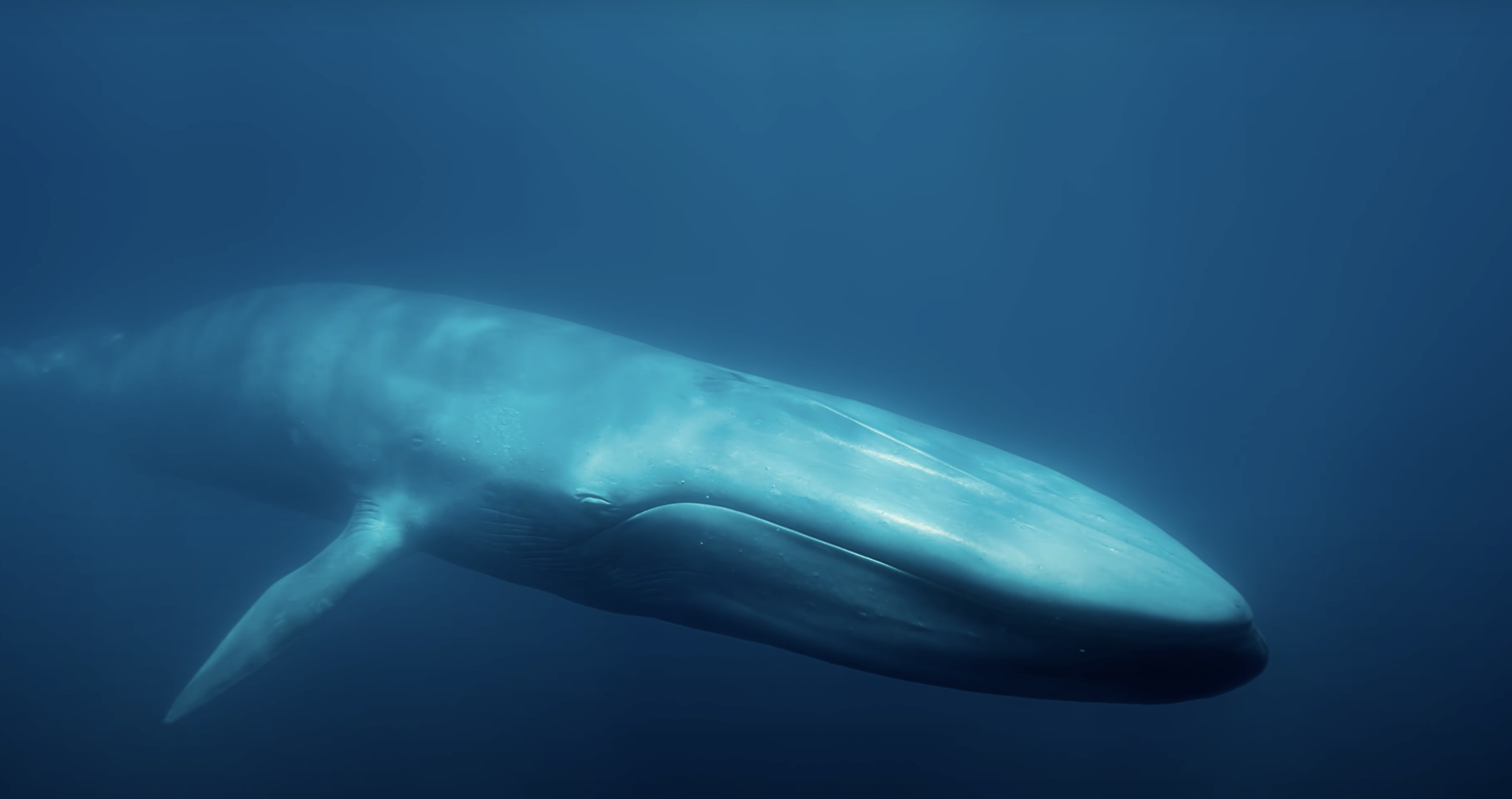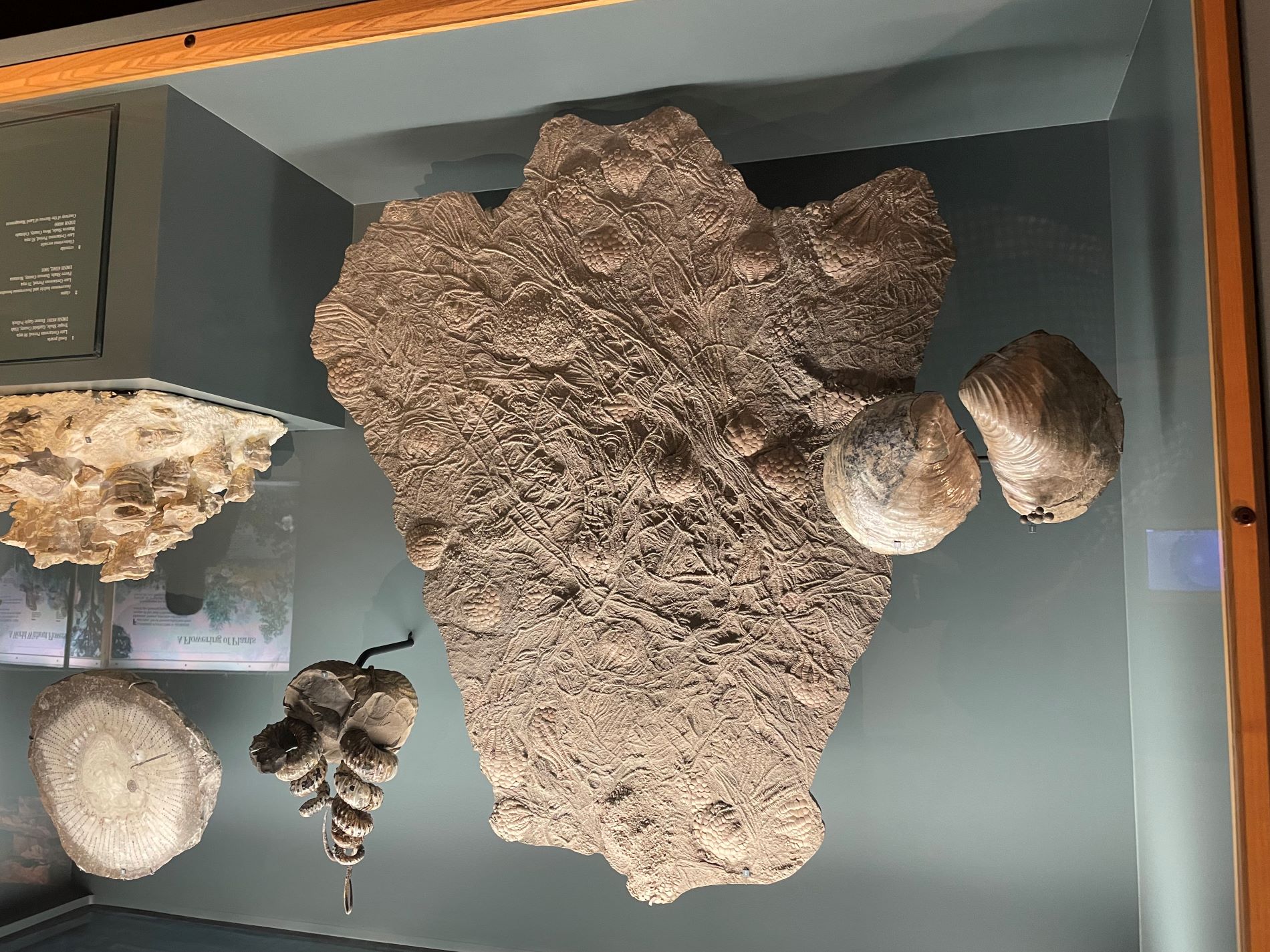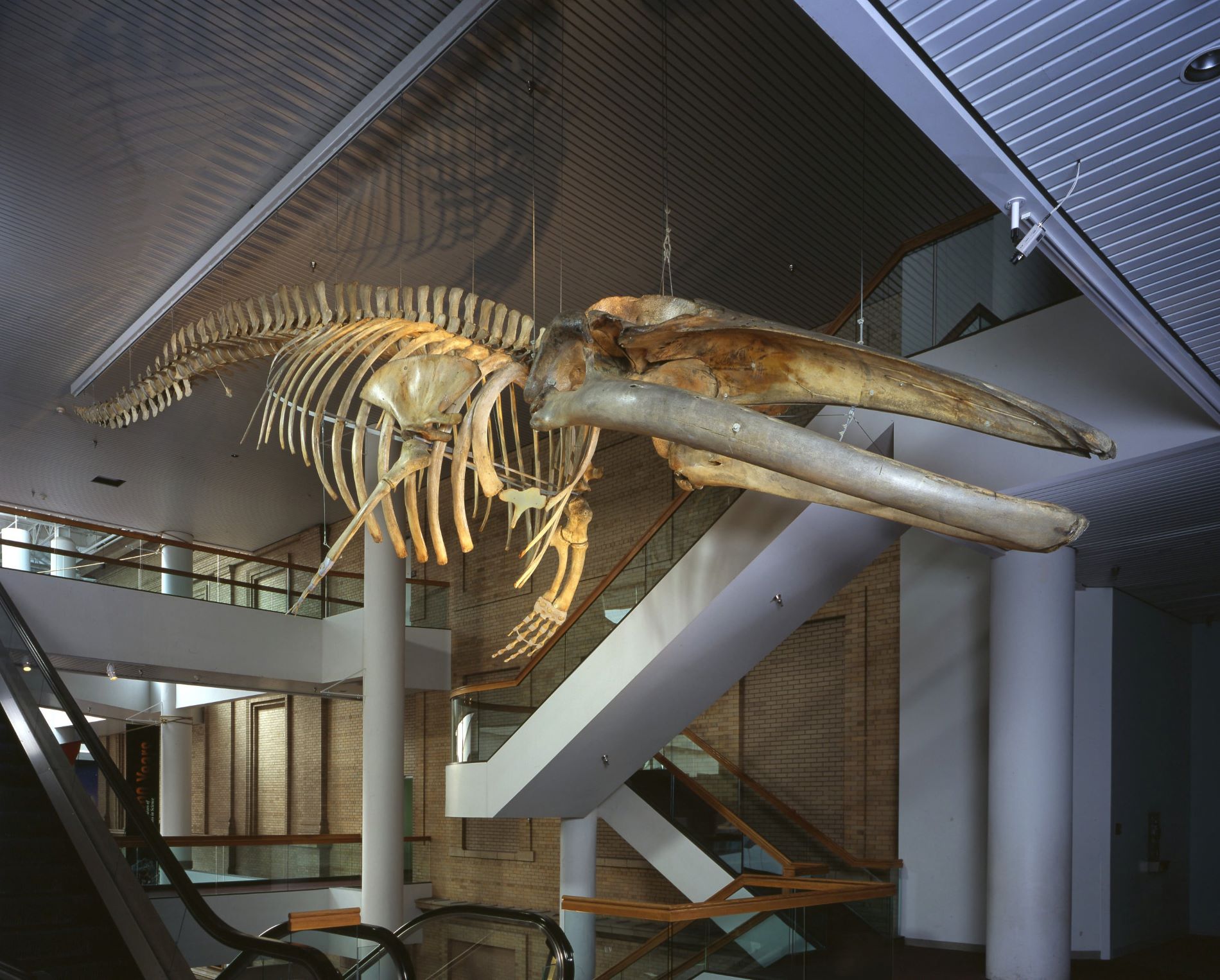
While Colorado may be more than hundreds of miles from the nearest ocean, the Denver Museum of Nature & Science can still offer you a chance to experience the wonders of the marine world while staying close to home. From larger-than-life blue whales to awe-inspiring orcas, the Museum is bringing the ocean right to Denver.
Our latest temporary exhibition "Orcas: Our Shared Future" takes you into the realm of one of the world’s most beloved marine mammals. These intelligent creatures have captured our imaginations, from gracing a classic "Free Willy" movie poster to being respected as apex predators of the sea. This exhibition explores the biology, culture and conservation of orcas through incredible photography, multimedia displays and even a life-sized replica of an orca family.
Orcas: Our Shared Future

"Orcas: Our Shared Future" is now open at the Denver Museum of Nature & Science. (Photo/ Royal BC Museum)
You'll learn fascinating orca facts, like how they use unique vocalizations and languages within their family pods. You'll gain insights into their remarkable hunting capabilities and the threats they face from human activities. By the end, we hope you'll come away with a deeper appreciation for these magnificent creatures and be inspired to protect their future in our shared world.
Read more: 7 Fascinating Facts from the "Orcas: Our Shared Future”
Blue Whales: Return of the Giants 3D

Finally starring on a screen befitting its own size, "Blue Whales: Return of the Giants 3D" transports you into the vast underwater realm of the largest creatures on Earth. (Photo/ SK Films)
Beyond orcas, your ocean journey continues in our giant screen Infinity Theater. Finally, starring on a screen befitting its own size, "Blue Whales: Return of the Giants 3D" transports you into the vast underwater realm of the largest creatures on Earth. Narrated by award-winning actor Andy Serkis, the movie takes viewers on a journey of a lifetime to explore the world of the magnificent blue whale, a species rebounding from the brink of extinction.
The film follows two scientific expeditions: one, a mission to find a missing population of blue whales, not seen in 50 years; and the other, to join Diane Gendron, the “Blue Whale Whisperer,” in Mexico’s Gulf of California, where she and her team explore the important role these remarkable animals play in the health of our oceans.
Read more: Plenty of Reasons to Watch Blue Whales: Return of the Giants 3D
Ocean Wildlife from Australia to the Arctic Circle




What's your favorite ocean animal? Is it a manatee? Polar bear? Walrus? In the Denver Museum of Nature & Science's wildlife diorama halls, we have many, many specimens displayed in recreated natural habitats, so it's likely you can see one of your favorites! Not only can you see and appreciate your favorite ocean wildlife, but you can interact with touchable features like a polar bear jaw and tooth or a recreated walrus tusk — exciting details for both children and adults to enjoy.
The photos above are just a few of our favorite ocean wildlife scenes that you can find in the South Pacific Islands and Bears & Sea Mammals dioramas on the Museum's Level 2.
Explore the Oceans from Tens of Millions of Years Ago!

Not only can you explore the present-day ocean, but you can go back in time 85 million years and see a glimpse of when Colorado itself was underneath an inland sea. (Photo/ Taran Volckhausen)
But wait there’s more! Not only can you explore the present-day ocean, but you can go back in time 85 million years and see a glimpse of when Colorado itself was underneath an inland sea. In our renowned "Prehistoric Journey" exhibition, you'll discover amazing fossils from when Denver wasn’t landlocked at all but rather landless. And as you walk into the Museum, don’t forget to look up to see the skeleton of a plesiosaur that swam in the ancient ocean that once covered Colorado.

A 56-foot fin whale skeleton is suspended above you when you on the second floor. (Photo/ Rick Wicker)
You can also marvel at a 56-foot fin whale skeleton suspended above you when you walk into the Infinity Theater lobby on the second floor. The whale's baleen plates, its filter-feeding system composed of keratin, which is like the stuff that makes up your fingernails, are housed in the Museum's research collections.
So, the next time someone tells you that Colorado’s great, but it’d be better with the ocean nearby, point them in the direction of the Museum. Whether you're a marine biology buff or someone who simply appreciates the beauty and power of nature, don't miss the chance to connect with the ocean right here in landlocked Denver, and discover the ocean as you never have before!
Read more: Things to do this Spring at the Denver Museum of Nature & Science
